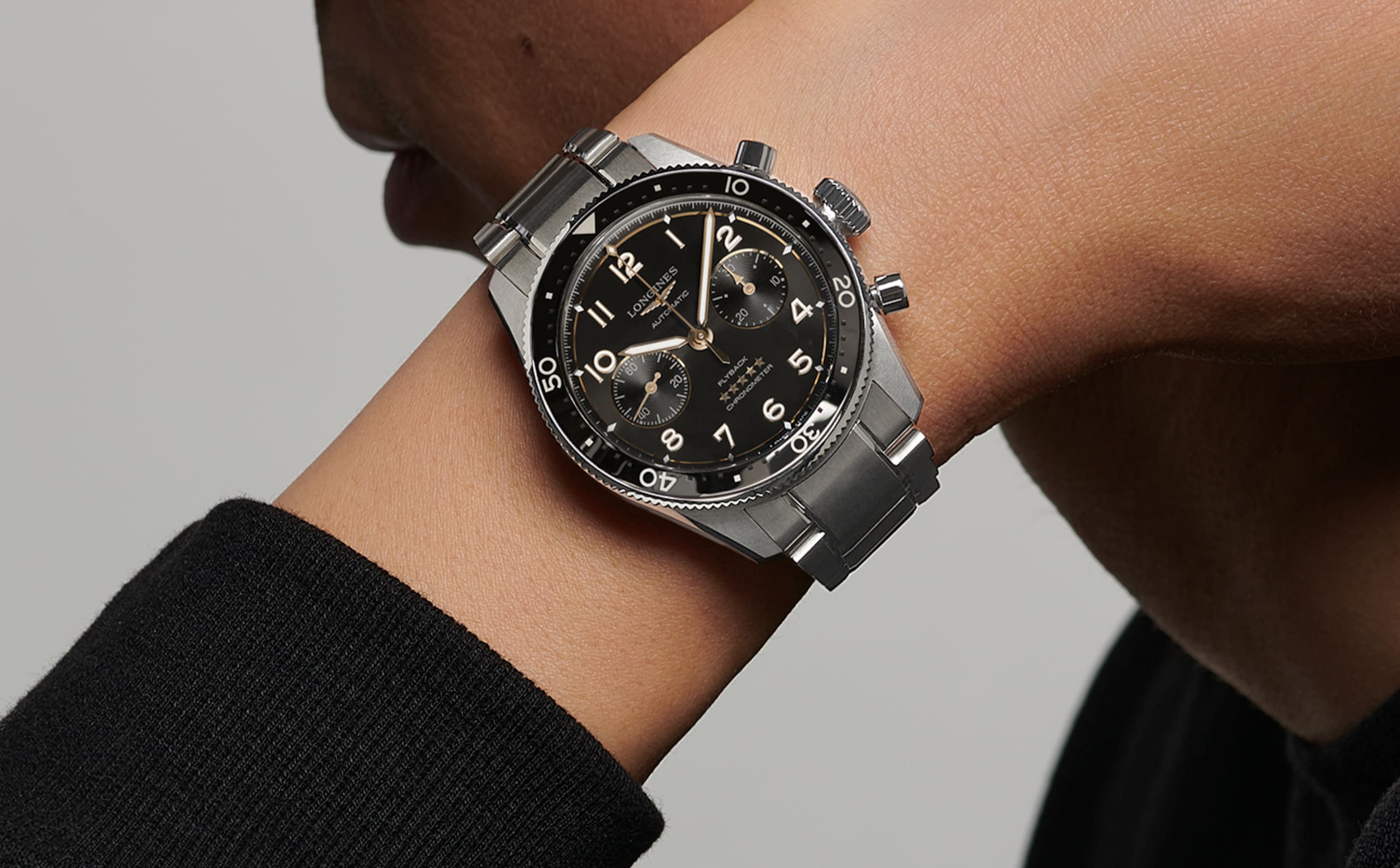
What is an Automatic Watch & How does it work?
An automatic watch is a self-winding watch. The automatic watch movement uses the motion of the wearer’s wrist to power itself. If worn regularly, the wearer does not have to wind the watch.
An automatic watch is a self-winding watch. The automatic watch movement uses the motion of the wearer’s wrist to power itself. If worn regularly, the wearer does not have to wind the watch.
How do automatic watches work?
All watches need to be wound to power them. In an automatic watch, the natural movement of the wearer’s wrist turns the rotor, which automatically winds the mainspring, the element that drives the watch. This whole sequence powers the timepiece.
What are the parts in an automatic watch?
The mechanical components of an automatic watch work seamlessly together to provide accurate timekeeping. From powering the timepiece to preventing wear-and-tear, each piece plays a vital role. Read more about the key parts of an automatic watch:
Mainspring –
This spring-steel band is the power source of the watch movement. The more the watch is wound, the tighter the mainspring coils, the more energy it stores to be converted into electricity.
Crown –
Located on the side of the watch, the crown is pulled out to set the time and manually wind the watch.
Rotor –
The rotor is a freely spinning metal weight, which rotates the mainspring, in turn recharging the watch’s movement. This component distinguishes an automatic watch from a manual watch. The natural movement of the wearer’s wrist causes the rotor to spin, automatically charging the watch.
Gear train –
This small series of internal gears drives the watch’s hands. The energy released from the mainspring powers this component.
Balance wheel and escapement –
The balance wheel and escapement work together as the watch’s internal braking system. The escapement is made up of the escape wheel and the pallet fork. As the balance wheel swings in a precise rhythm, it alternately hits the escape wheel and the pallet fork. This allows the energy from the mainspring to be released in equal increments, known as the escapement. This motion also causes the hands to tick.
Jewels –
An automatic watch might have a decorative dial, but it will most certainly have jewels on the inside. These synthetic rubies act as a bearing for each moving part, ensuring the whole mechanism runs smoothly and preventing the parts from overworking.
Automatic watch accuracy
Accuracy is everything when it comes to choosing the perfect timepiece for your needs. Automatic watches are known for their high-level accuracy, with standard automatic watches boasting an accuracy level of 99.97%. Standard self-winding movements tend to gain or lose 25 seconds every other day, which is an insignificant amount of inaccurate timekeeping.
Aside from accuracy, here are some more benefits of automatic watches:
No batteries –
Thanks to the watch’s self-winding movement, automatic watches don’t use batteries, reducing maintenance costs. The natural movement of the wearer’s wrist and the mainspring are enough to power an automatic watch.
Self-winding mechanism –
An automatic watch’s self-winding feature contributes to the timepiece’s high level of accuracy.
Durability –
If maintained properly, automatic watches can last for decades to come, appreciating their value over time.
Craftsmanship and aesthetics –
Crafting an automatic watch requires ingenuity, engineering and artistry. The self-winding movement, inner mechanics, and stunning designs make automatic watches incredibly attractive and collectible timepieces.
Automatic watch vs manual watch
The main difference between automatic watches and manual watches is the way the watch is wound. Whilst automatic watches can be wound up by either rotating the crown or using the natural movement of the wearer’s wrist, manual watches can only be wound up by rotating the crown.
Can you wear an automatic watch all the time?
What makes automatic watches a popular choice is that they don’t have to be wound manually. If worn every day, the natural motion of the wearer’s wrist will be enough to continue powering the movement. If the automatic watch hasn’t been worn for a while, the watch’s accuracy can decrease and even the whole mechanism can stop. Usually, automatic watches have a power reserve that can last at least a couple of days, depending on the model and the make. If the wearer hasn’t worn their automatic watch and the mechanism has stopped completely, the wearer will have to wind up the watch manually by rotating the crown.
Automatic watches
Discover more articles
View all